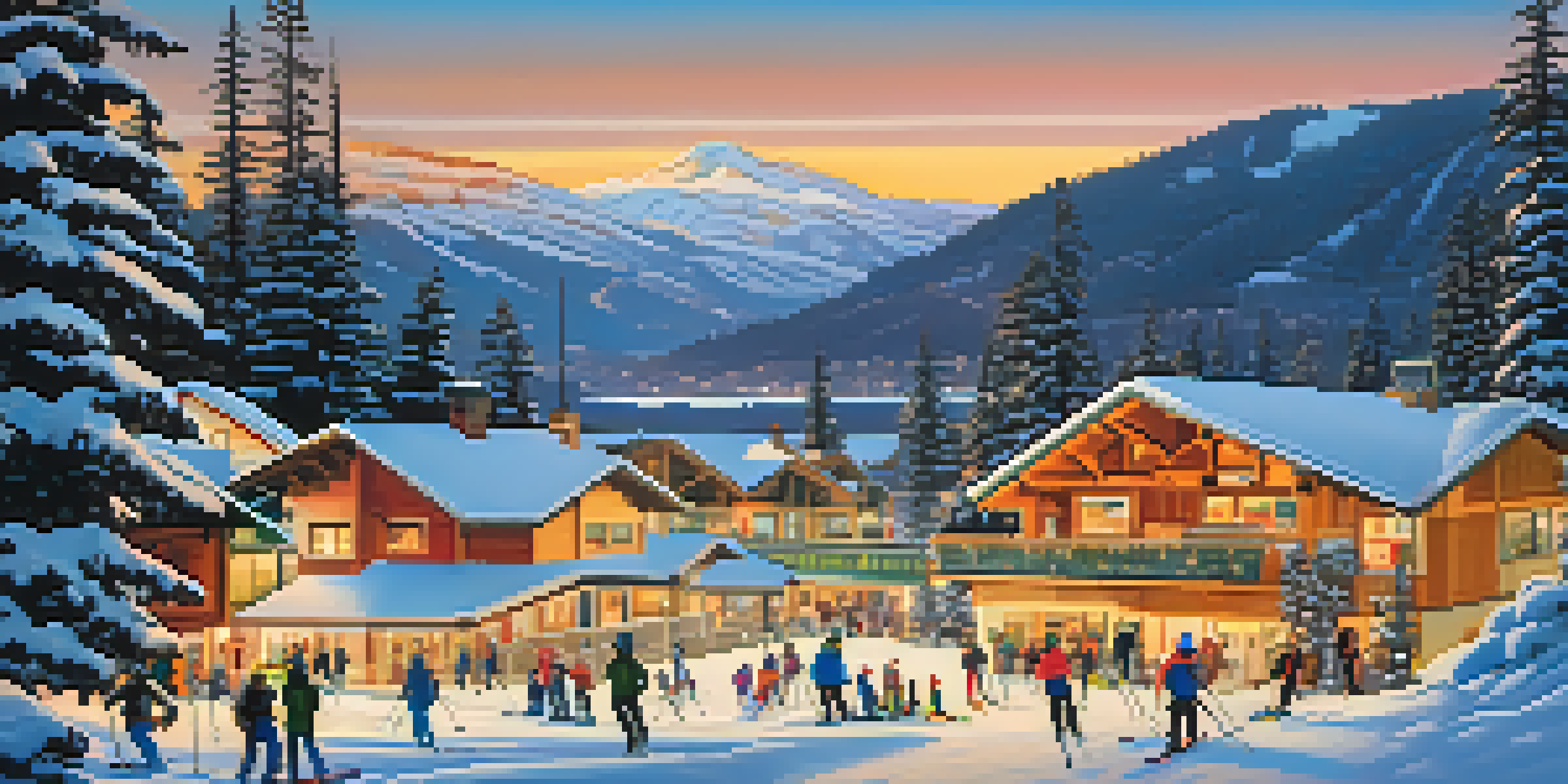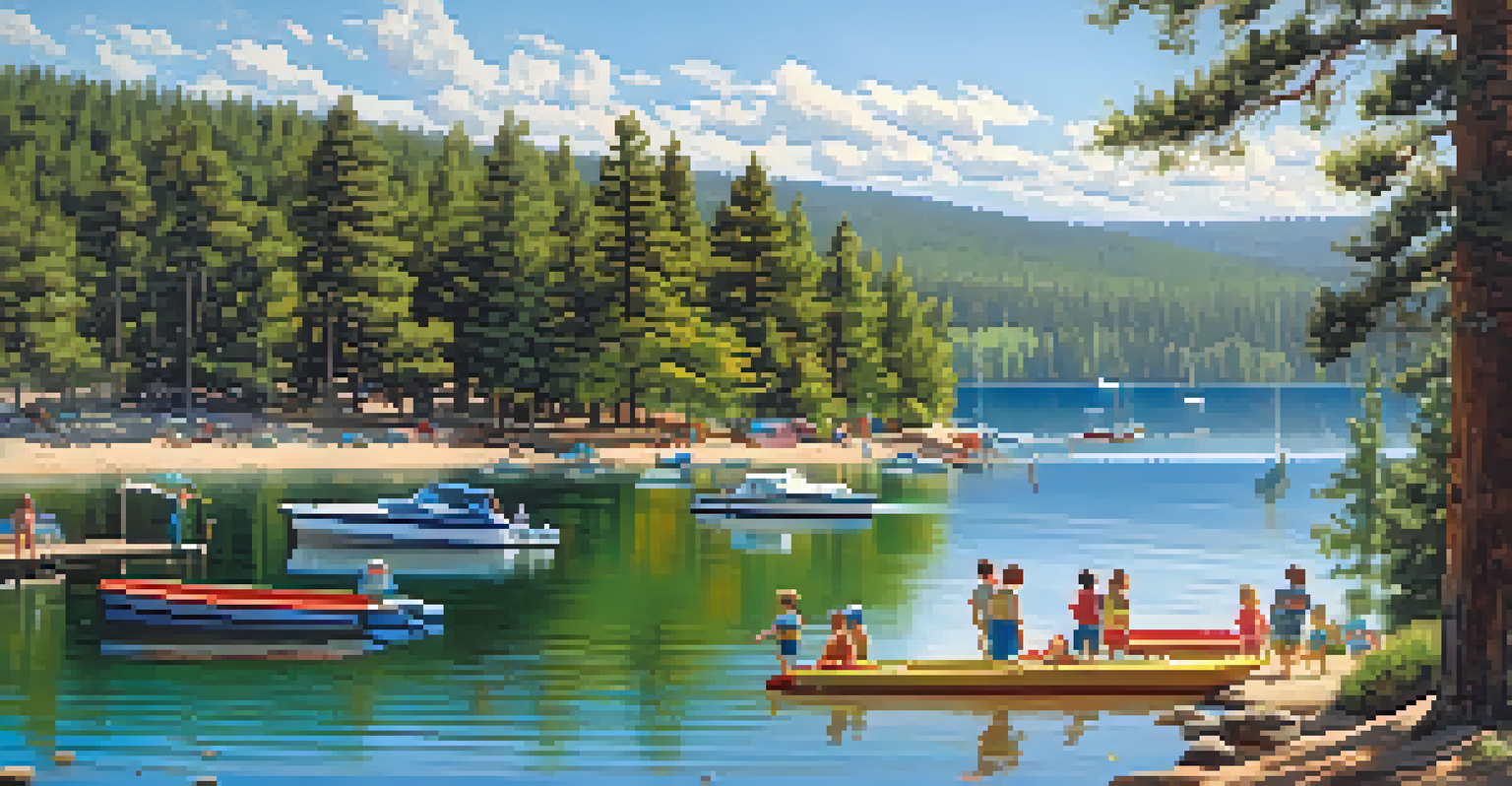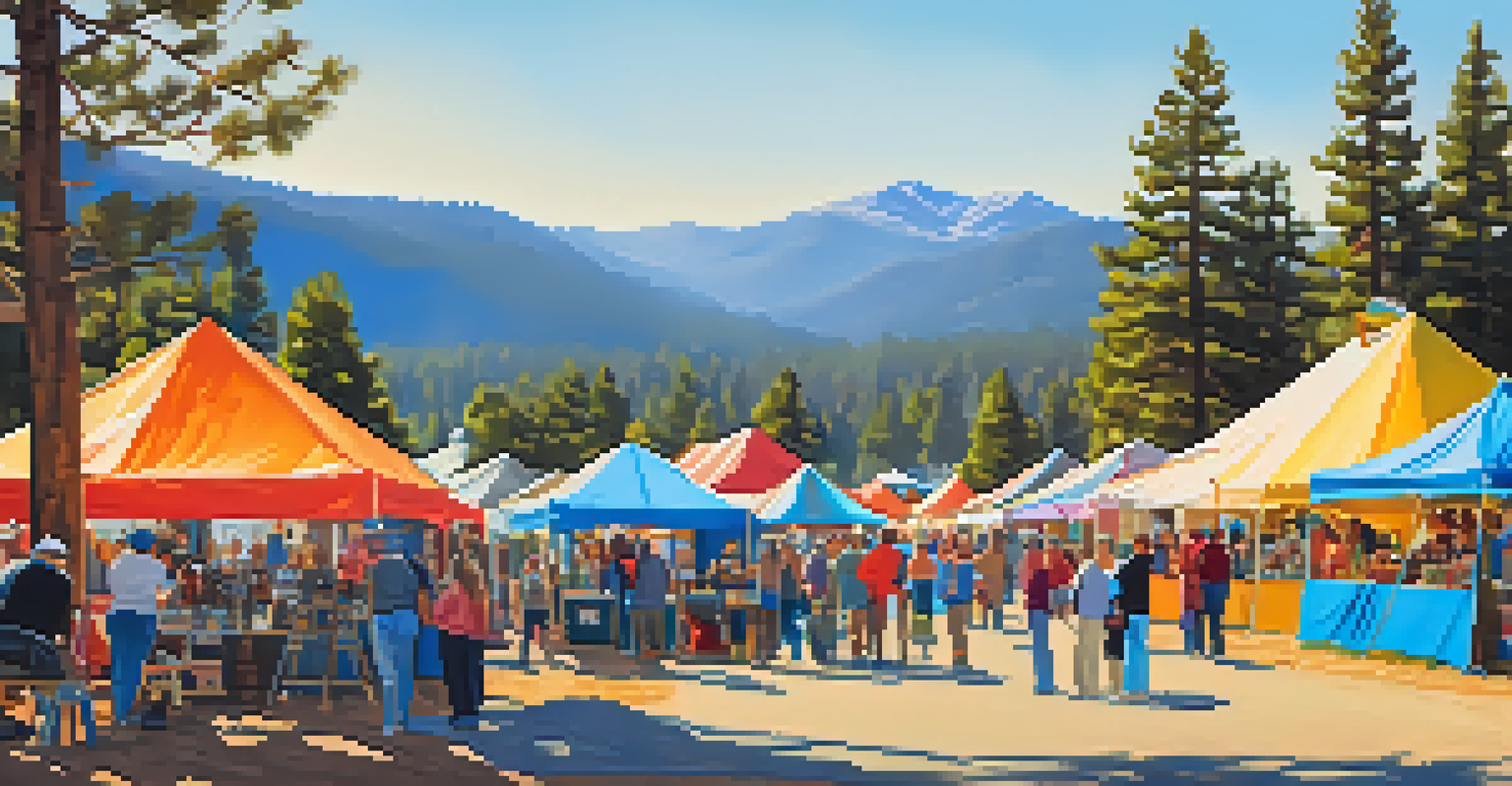Tourism Boom: Evolution of Big Bear's Cultural Landscape

The Origins of Big Bear's Tourism Industry
Big Bear's journey into the tourism spotlight began in the early 20th century, when visitors were drawn to its stunning natural beauty. Initially, the area attracted hunters and fishermen seeking adventure in the great outdoors. The allure of the pristine lake and surrounding mountains quickly caught the attention of families looking for a weekend escape.
Tourism is a vital part of any community's economy, but it must be balanced with the preservation of local culture and natural resources.
As roads improved and the popularity of the automobile grew, more tourists ventured into the region. The establishment of lodges and cabins transformed Big Bear into a vacation hotspot, providing accommodations for those seeking a retreat from urban life. This foundational tourism laid the groundwork for the cultural tapestry that would develop over the decades.
With this growing influx of visitors, local businesses began to emerge, catering to the needs of tourists and creating a vibrant community. This marked the start of Big Bear's transformation into a cultural melting pot, where different influences would converge and shape its identity.
The Impact of Seasonal Tourism
Seasonal tourism has played a pivotal role in shaping Big Bear's cultural landscape, particularly with winter sports. Ski resorts started to pop up in the mid-20th century, drawing snow enthusiasts from far and wide. This seasonal boom not only brought economic benefits but also solidified Big Bear's reputation as a winter wonderland.

The influx of skiers and snowboarders led to the development of a unique culture centered around winter sports. Local events such as snow festivals and competitions emerged, further enhancing the community's identity. These gatherings not only celebrate the thrill of winter sports but also foster camaraderie among residents and visitors alike.
Tourism's Growth and Cultural Impact
Big Bear's tourism has shaped a vibrant community, blending diverse cultures and local traditions.
However, it's not just winter that brings tourists; summer activities like hiking, fishing, and boating attract a different crowd. This seasonal ebb and flow has resulted in a dynamic cultural landscape that reflects the diverse interests of its visitors throughout the year.
Preserving Local Heritage Amidst Growth
As tourism flourished, the need to preserve Big Bear's rich local heritage became increasingly important. Community members recognized that their unique history and culture were at risk of being overshadowed by commercial development. This awareness sparked initiatives aimed at safeguarding historical sites and traditions.
The beauty of a place lies not just in its scenery, but in the stories, cultures, and experiences it offers.
Local organizations and residents banded together to celebrate Big Bear's heritage through festivals, art shows, and educational programs. These events not only honor the past but also educate visitors about the area's rich history, creating a deeper connection between tourists and the community. It's a beautiful blend of preservation and progress.
This commitment to honoring local heritage has fostered a sense of pride among residents and created a welcoming atmosphere for tourists. By integrating historical elements into modern tourism, Big Bear has successfully maintained its unique identity while embracing growth.
The Role of Art and Culture in Tourism
Art and culture have become vital components of Big Bear's tourism strategy, enhancing the visitor experience. Local artists and craftsmen have found inspiration in the area's natural beauty, resulting in a thriving arts scene. Galleries, studios, and craft fairs showcase their work, inviting tourists to engage with the local creative community.
Events such as art walks and music festivals not only attract tourists but also provide a platform for local talent to shine. These gatherings foster a sense of community and encourage collaboration among artists, musicians, and performers. Visitors leave with a deeper appreciation for Big Bear's cultural richness, often taking home unique souvenirs that reflect the area's artistic spirit.
Sustainability in Tourism Practices
The focus on sustainable tourism in Big Bear aims to balance growth with environmental preservation for future generations.
This emphasis on art and culture not only enriches the tourist experience but also strengthens the local economy. As visitors seek more authentic and meaningful experiences, Big Bear's creative offerings set it apart from other tourist destinations.
Sustainable Tourism: Balancing Growth and Preservation
With the rise of tourism in Big Bear, the conversation around sustainable practices has become increasingly essential. Community leaders and residents recognize the importance of balancing growth with environmental preservation. This focus on sustainability ensures that future generations can enjoy the beauty of Big Bear without compromising its natural resources.
Initiatives like eco-friendly lodging, waste reduction programs, and conservation efforts have been put into place to protect the area's delicate ecosystem. By promoting responsible tourism, Big Bear aims to create a lasting positive impact on both the environment and the local community. It's a proactive approach that resonates with environmentally-conscious travelers.
The commitment to sustainability has fostered a culture of awareness among residents and visitors alike. By choosing to prioritize eco-friendly practices, Big Bear is paving the way for a tourism model that respects and preserves its unique cultural and natural landscapes.
Celebrating Diversity in Big Bear's Community
As tourism has evolved, so too has the diversity of Big Bear's community. The influx of visitors from various backgrounds has infused the area with a rich tapestry of cultures. This blending of experiences has not only enriched the local culture but also created a welcoming environment for everyone.
Cultural festivals celebrating different heritages have become common, showcasing Big Bear's commitment to inclusivity. These events foster understanding and appreciation among residents and visitors, creating a sense of belonging that extends beyond the tourist experience. It's a beautiful reminder that diversity is a strength.
Emphasis on Art and Local Heritage
Art and culture play a crucial role in enhancing the tourist experience while showcasing Big Bear's unique identity.
The celebration of diversity in Big Bear has also influenced local cuisine, arts, and traditions. Restaurants now offer a variety of international dishes, while local artists incorporate different cultural themes into their work. This vibrant mix reflects the dynamic and evolving nature of Big Bear's cultural landscape.
Future Trends in Big Bear's Tourism Landscape
Looking ahead, Big Bear's tourism landscape is poised for continued evolution. As more travelers seek authentic experiences, the emphasis on local culture, sustainability, and community engagement will only grow. This shift presents exciting opportunities for local businesses and artists to showcase their unique offerings.
Technological advancements are also shaping the future of tourism in Big Bear. From virtual reality experiences to online booking platforms, these innovations are making it easier for visitors to explore the area and plan their trips. The integration of technology with local culture can create new avenues for engagement and appreciation.

Ultimately, the future of Big Bear's tourism will depend on its ability to balance growth with preservation. By staying true to its roots while embracing change, Big Bear can continue to thrive as a destination that celebrates its rich cultural landscape and natural beauty.